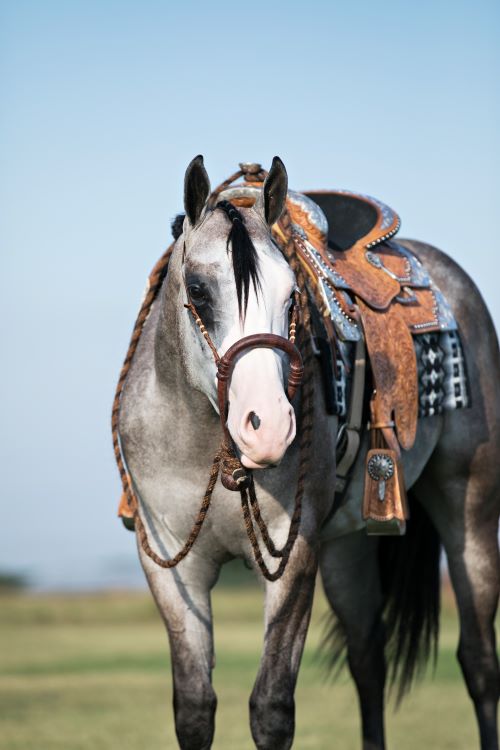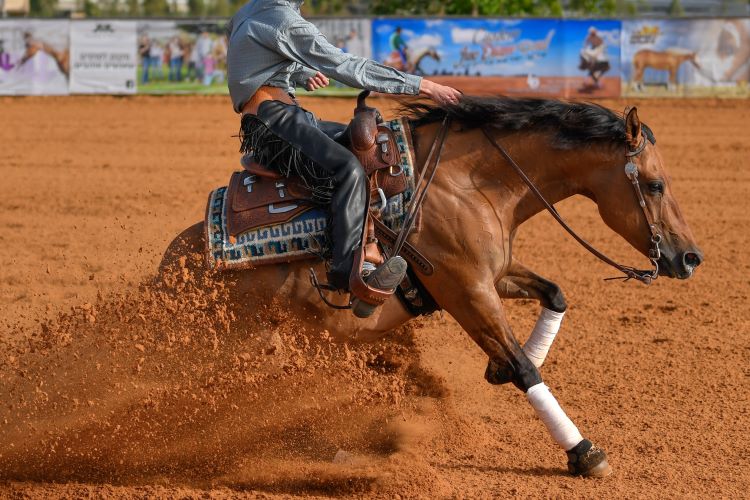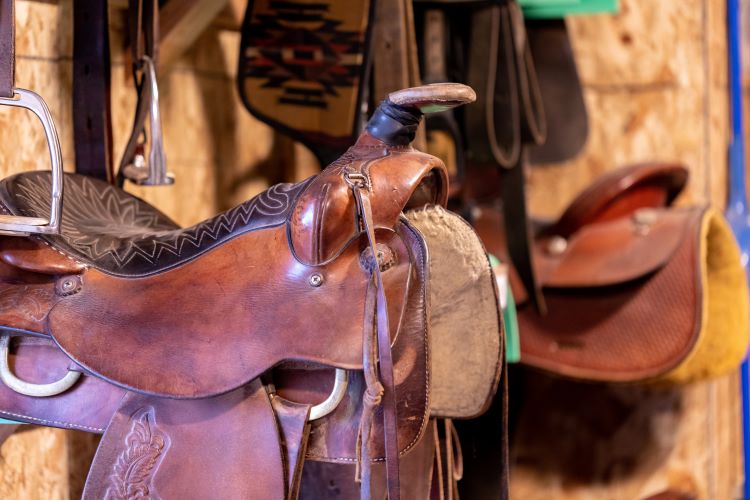
Western riding has its origins in America. Spanish conquistadors brought their horses and saddles to America and settled there. Western riding came into being in connection with the Native Americans, who mostly used horses to get around and steered them with their legs only.
Cowboys and settlers mixed both systems and firmly established them as part of their daily work on the cattle farms. Since cowboys spent most of the day in the saddle, herding and driving cattle, the saddle had to be as comfortable as possible. The horses had to be fast, agile and fearless, in order to be able to drive cattle effectively. It soon becomes clear where typical disciplines in Western riding originated.
The western horse is usually an Appaloosa, Quarter horse, Paint horse or Palomino. These breeds are up to 160 cm tall and have a rather square build. Their large quarters and rather dainty forelimbs enable the horse to make quick turns. Due to their naturally fearless and calm nature, they are the ideal workhorses for challenging work with other animals.

The philosophy of Western riding is to make it easy for the horse to do the right thing and difficult to do the wrong thing. From this the horse learns to yield to pressure. In comparison to classical dressage, where the rider influences the horse by permanently holding the reins, the Western horse is ideally ridden in contact with a loose rein and reacts sensitively to weight and thigh aids. After all, the cowboy usually had to have one hand free for the lasso when herding cattle.
Reining includes various prescribed lessons, such as the back up, spins or the sliding stop. In order to be able to do this, horses often wear specially made horseshoes. As in dressage competitions, there is freestyle reining, in which the rider may choose which lessons he or she wants the horse to perform and show the judges.

Trail is based on a good relationship of trust between rider and horse. Not only is the horse's skill required, but the horse is asked to trust its rider in unknown situations, such as crossing wooden bridges, tarpaulins, streamers or gates.
In Western Pleasure, the horse's gaits are evaluated and checked by judges. The judges assess the horse's gaits, the purity of the rhythm, the aids and the horse's posture.
Cutting stands for work on and with cattle. In these tests, the rider has two and a half minutes to drive a cow out of a herd and to separate it from the herd - in other words, to cut. Breeds from cutting lines are particularly well suited for these activities, as they already have a sense for chasing cows in their genes.
In this test, the general competence and quality of the western horse is evaluated in different disciplines. The test consists of the following parts: Ranch Trail, Ranch Cutting, Working Ranch Horse, Ranch Riding and Ranch Conformation.
As the name suggests, this is about the horse's ability when it is led by the halter and has to perform lessons on the ground. In addition to the exact completion of the required tasks, the horse's condition and condition are also evaluated.
In Western riding, the horse performs required tasks by receiving impulses. The movements are carried out until the horse receives a new impulse from the rider. Impulses are given in the form of reins, thighs, weight and whip.
The style of dress of the Western riding rider is, like the riding style, quite casual. The rider usually wears jeans, belt, western riding boots and, if necessary, spurs. The cowboy hat completes the look of the Western riding.

As in other disciplines, the western horse wears a saddle, a bridle or a sidepull. The western saddle, however, is very different from the classic dressage saddle: it has a wider seat and a horn, which is intended for attaching the lasso. In addition, the western saddle is much heavier and bulkier, but often more comfortable than the conventional dressage saddle. Under the saddle lies a western pad, the saddle pad for Western riding.
In training, the horse wears a normal water snaffle, but without the noseband and curb strap. To protect the horse's legs from injury, it should wear boots during training. However, apart from a few isolated competitions, such as in working classes, the wearing of boots is prohibited.